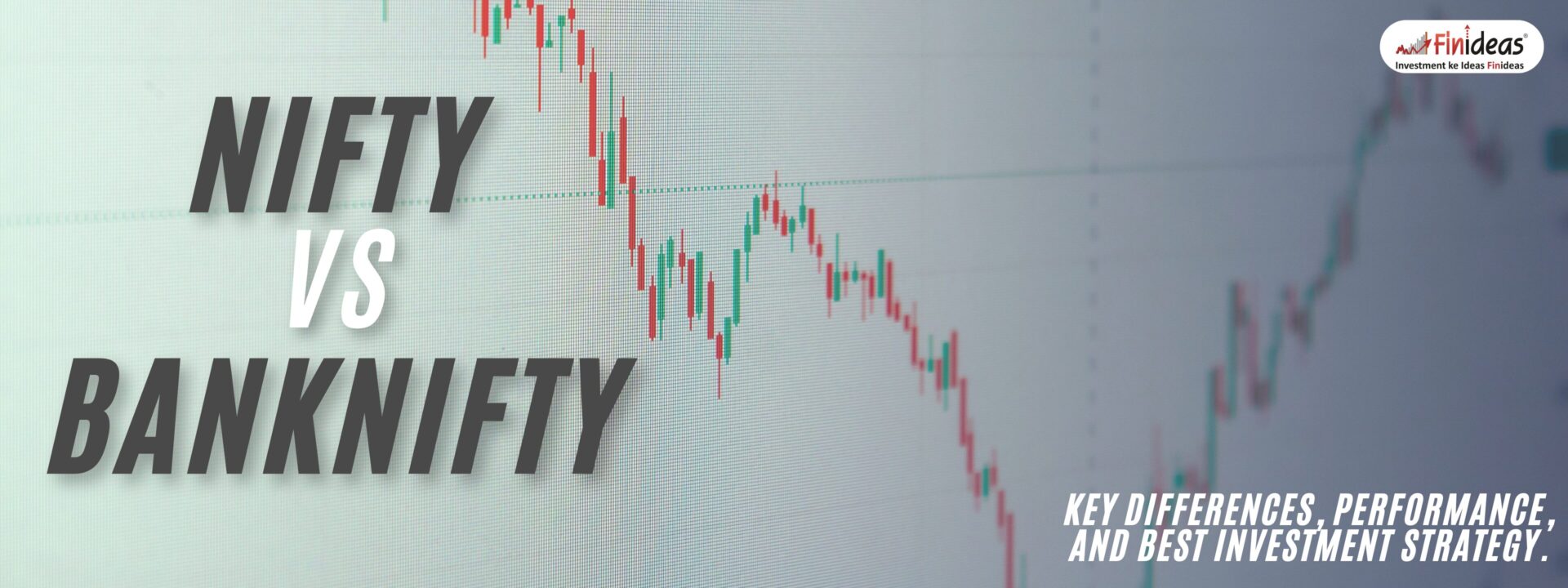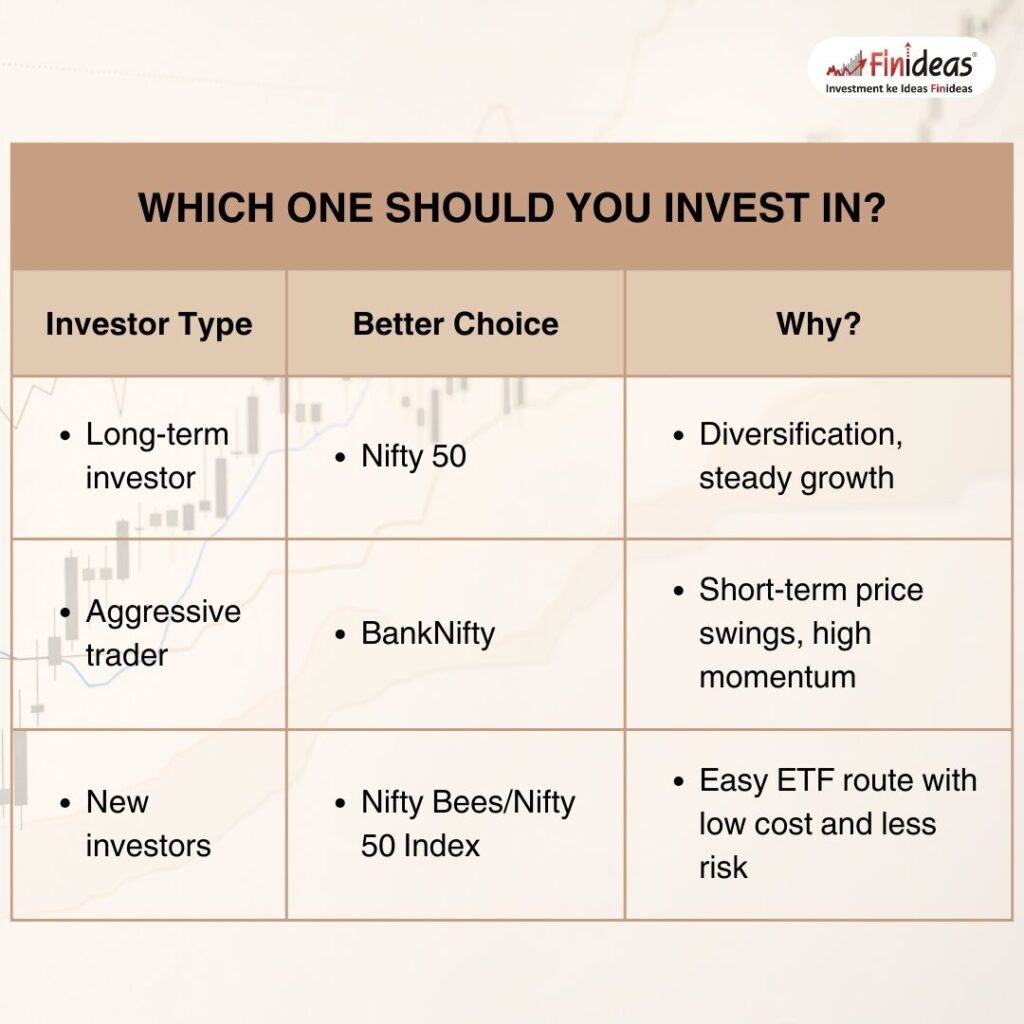Difference between Nifty and BankNifty
What is the Difference Between Nifty and BankNifty?
In the Indian stock market, Nifty and BankNifty are among the most tracked indices by traders and investors. Whether you’re checking the Nifty today or watching the Bank Nifty chart, understanding the difference is crucial for making informed investment decisions.
Let’s break down the key differences in simple terms.
What is Nifty or Nifty 50?
Nifty 50 (also called Nifty or indexense nifty50) is the benchmark index of the National Stock Exchange (NSE). It represents the top 50 companies across 13 sectors of the Indian economy.
💡 Think of Nifty as a barometer of the Indian stock market.
✅ Examples of Nifty 50 Companies:
- Reliance Industries
- HDFC Bank
- Infosys
- ICICI Bank
- TCS
You can track its movement on platforms like nifty share price, nifty 50 chart, or even invest using Nifty Bees.
What is BankNifty or Bank Nifty?
BankNifty (or Bank Nifty) is a sectoral index that tracks the top 12 most liquid and large-cap banking stocks listed on NSE. It’s a favorite among intraday traders and options traders.
✅ Examples of Bank Nifty Stocks:
- HDFC Bank
- SBI
- ICICI Bank
- Axis Bank
- Kotak Mahindra Bank
Use tools like the bank nifty chart, bank nifty live, or banknifty today to track real-time price movements.
Key Differences Between Nifty and BankNifty
| Feature | Nifty 50 (NSE) | BankNifty |
|---|---|---|
| Composition | Top 50 diversified companies | Top 12 large banking stocks |
| Sector Exposure | Multiple sectors (IT, Pharma, FMCG, etc.) | Only Banking Sector |
| Volatility | Moderate | High |
| Risk | Lower due to diversification | Higher due to sector concentration |
| Investment Tools | Nifty Bees, Index Funds | Futures, Options, ETFs |
| Performance Checker | Nifty 50 chart, Nifty 50 share price | Bank Nifty today, Bank Nifty share price |
Nifty vs BankNifty: Which Performs Better?
Both indices have performed well historically but in different patterns:
🔹 Nifty 50 Index (from 2017–2022):
Returned around 13% CAGR, with moderate ups and downs.
🔹 BankNifty (same period):
Returned 15-16% CAGR, but with higher volatility.
So, while BankNifty can give higher returns, it also comes with greater risk.
Where Can You Track Them?
If you’re a nifty trader or just tracking market trends, here are platforms:
- Nifty today → NSE official site or investing apps
- Bank Nifty today → NSE live market or trading platforms
- SGX Nifty Futures Liv → For global cues on Nifty performance
- Nifty 50 share price and Bank Nifty share price → For detailed stock-level analysis
Which One Should You Invest In?
That depends on your goal:
Best Strategy: Finideas’ Index Long Term Strategy (ILTS)
If you’re serious about growing wealth in a systematic and low-risk manner, then Finideas’ Index Long Term Strategy (ILTS) is for you.
🔷 It uses Nifty and Nifty Bees to build long-term wealth.
🔷 Suitable for SIP and lump sum investors.
🔷 Completely rule-based, avoiding emotional decisions.
🔷 Backed by strong historical performance.
💡 Whether you’re planning for retirement, buying a house, or wealth creation – Finideas ILTS ensures you stay on track.
Conclusion
Both Nifty and BankNifty are powerful tools — one gives you a diversified view of the Indian economy, and the other zooms in on the banking sector.
For most long-term investors, Nifty 50 is the stable choice, while Bank Nifty is better suited for traders and sector-specific plays.
Do you prefer investing in Nifty 50 or trading in Bank Nifty – and why? Let us know in the comments below!
Happy Investing!
This article is for education purpose only. Kindly consult with your financial advisor before doing any kind of investment.


